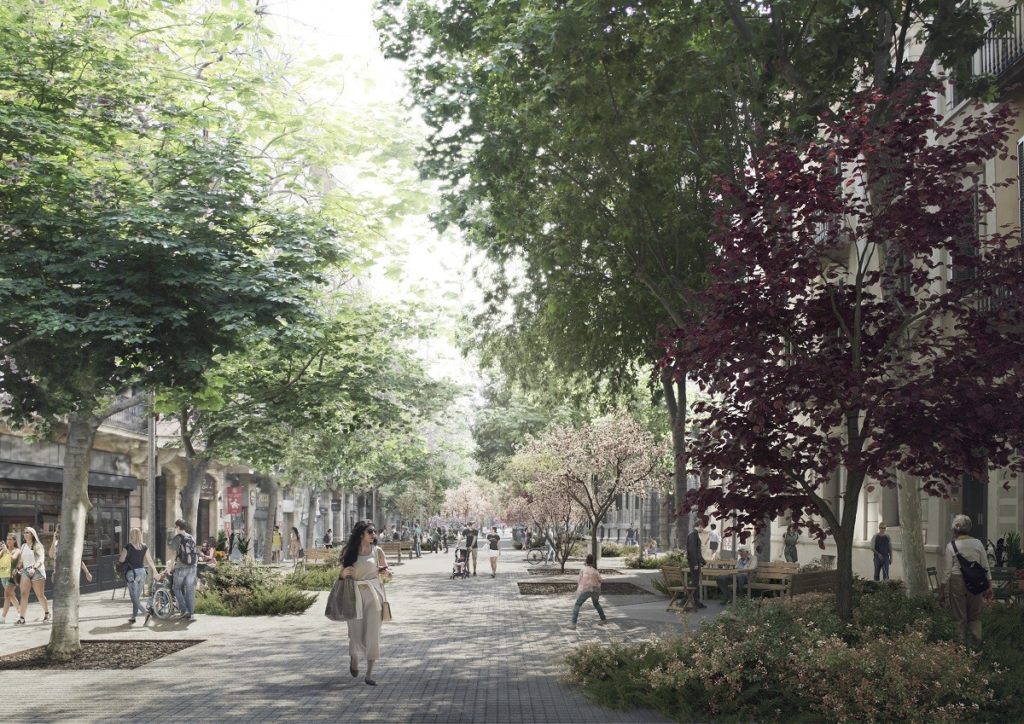TRANSFORMING CITIES INTO URBAN FORESTS
This principle, proposed by Cecil Konijnendijk, highlights the significant role played by urban forests and other forms of urban nature in promoting our health, well-being, and resilience to climate change. It acknowledges the need to consider various aspects of urban forests to achieve success. It also emphasizes the importance of integrating urban forests into our living, working, and recreational environments. Additionally, this principle is designed to be easily implemented, monitored, and remembered. It sets clear criteria for ensuring an adequate provision of urban trees in our communities:
Every home should have a view of at least 3 trees.
Each neighborhood should aim for a minimum tree canopy cover of 30%.
Access to high-quality public green spaces or parks should be within a maximum distance of 300 meters.

PART 01 – RULE ‘3’ TREES FROM YOUR BALCONY
To check whether every home in the city of Barcelona has a view of at least 3 trees, a buffer of 20 meters is created around each RESIDENTIAL building. Households which contain 3 or more trees within the radius, are set as ‘TRUE’. Otherwise, they receive the category of ‘False’ for the Rule ‘3’.

The results are plotted at the Census Area level. The areas of Eixample, Horta Guinardo and Sant Gervasi have the highest density of buildings meeting the criteria
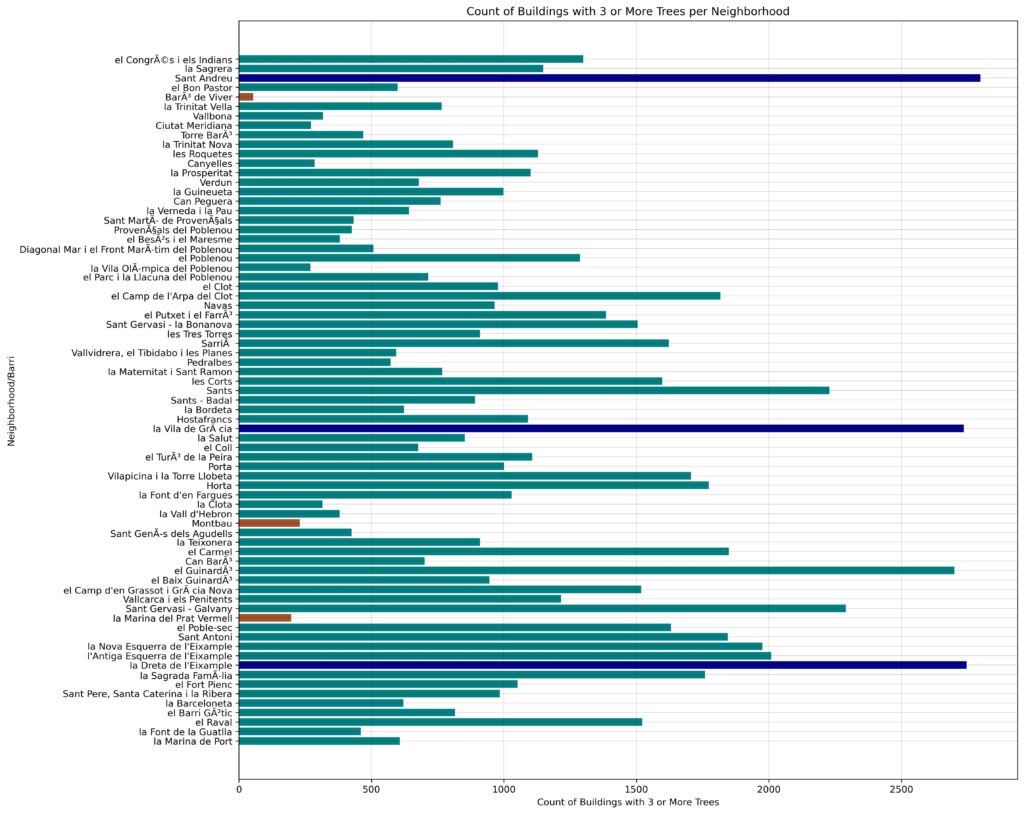
Rule ‘3’ & Population Income Level
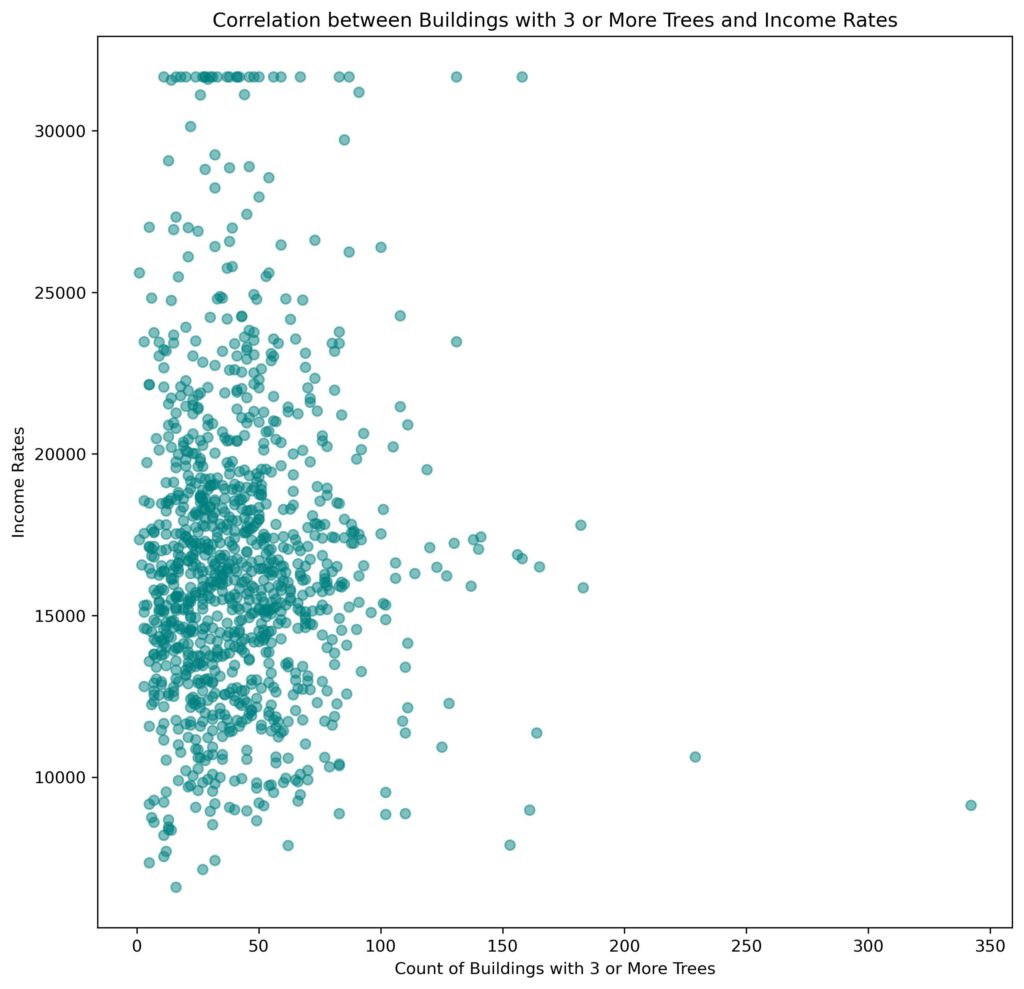
The previous results are plotted on a map, which clearly illustrates that there is no a direct correlation between the density of areas with buildings meeting the Rule ‘3’ & a higher income of their households. This was somehow an unexpected finding

PART 02 – RULE ’30’ TREE CANOPY COVER
To check whether every neighborhood has a minimum tree canopy cover of 30%, the NDVI (normalized difference vegetation index) of the city of Barcelona has been used. This measures how vigorous and healthy is the vegetation of a given area. From the range of categories within the NDVI, the project sets the threshold at 0.4 or above, representing moderate to high values.
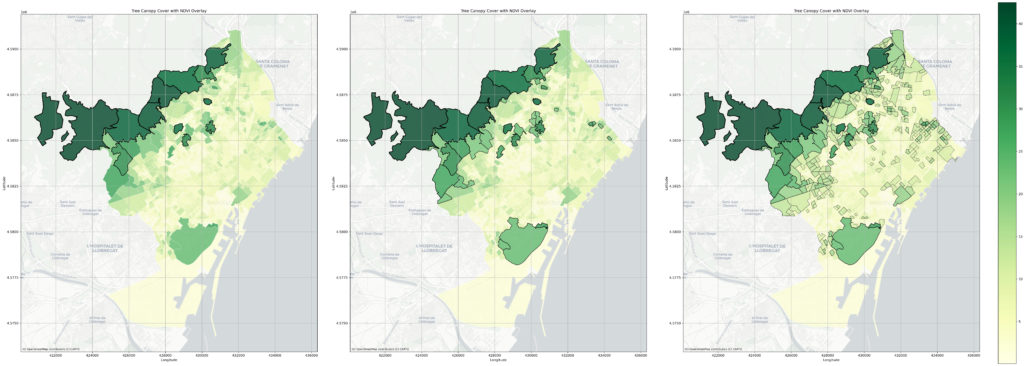
The NDVI is printed to meet three different thresholds: 10%, 20% and 30%. The lower the cover, the more the Index ‘penetrates’ the urban fabric. The maps show a clear concentration of urban forestry towards the north, where the Collserola Natural Park is in closer contact with the city
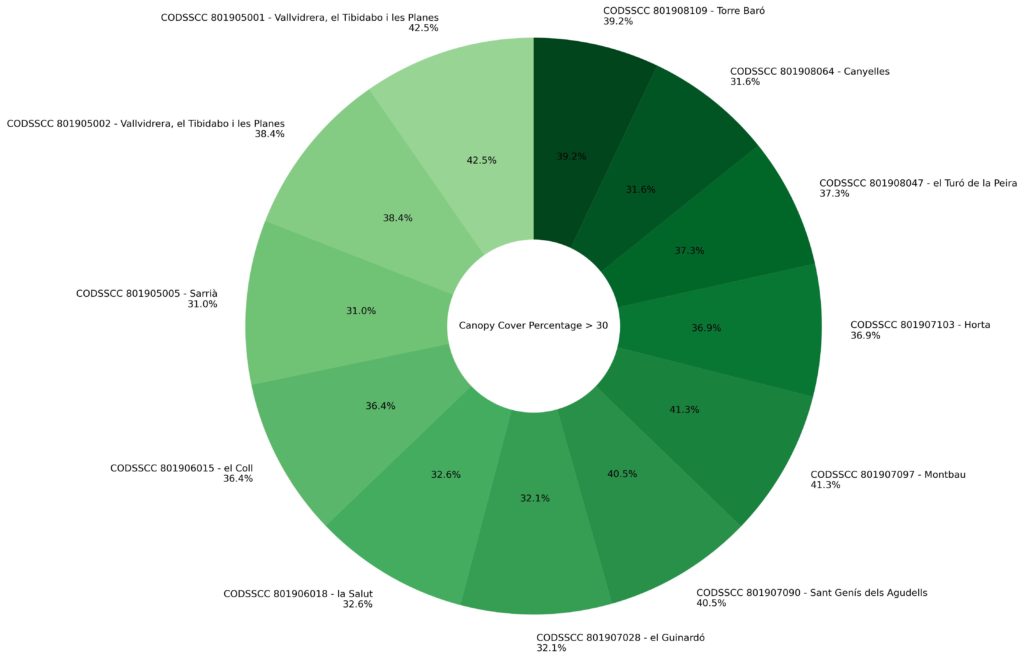
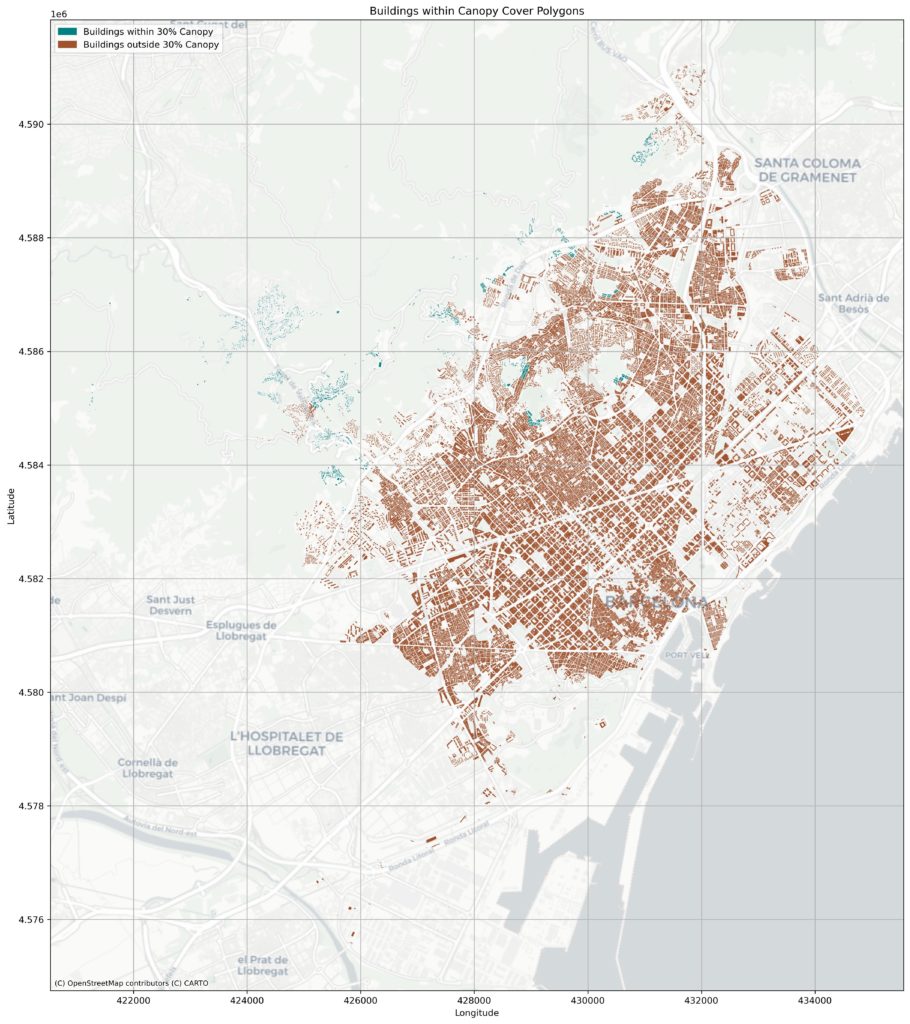
PART 03 – RULE ‘300’ METERS TO LARGE GREEN AREAS
To check whether every home has access to high-quality public green spaces or parks within a maximum distance of 300 meters, the project measures the proximity of each building to a green area that has an area of 5000m2 or above. The original Rule sets the threshold equal or above 1 Hectare.

The above map shows a great disconnection between households and large green areas/parks around the central area of the city, mainly in Eixample District. Although that area showed a high density of trees in its streets, there is lack of parks and green spaces that allow the population to better connect with nature
FINAL RESULTS – RULE 3-30-300 IN BARCELONA
The three categories within the Rule are combined to illustrate a unique value for each building in the City of Barcelona. The final results show that the Rule is far from being a success in the city. Only buildings located at the north of the city, close to large green infrastructures, meet the criteria
In light of the results, a second and less restrictive threshold is set, for those buildings that meet at least two of the conditions. This helps to incorporate a large number of households, specially located along the ‘crown’ of the city. Central areas do not meet the criteria yet.

It is very clear that the most restrictive condition is Rule ‘300’ : Proximity to Green Areas/Parks larger than 5000m2. The City needs to make the effort to incorporate new infrastructures, especially in central districts where the limitation of physical spaces is causing a problem. Solutions such as transforming Block Couryards into Parks, or greening Rooftops and Facades are said be solutions for a healthier, liveable, and greener Barcelona
